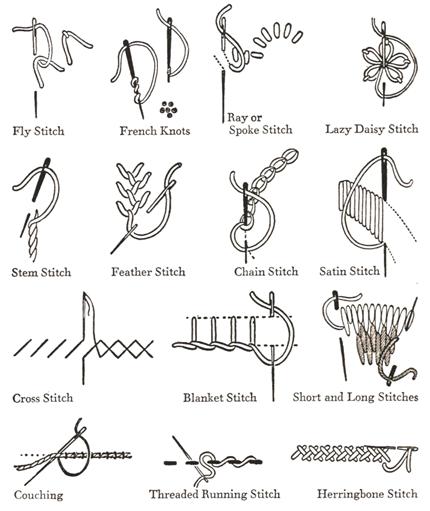
Salty Sam’s Fun Blog for Children
Number 480
Adam Smith
Hello Everyone

From time to time, l like to tell you about the life story of someone famous.
Some people have very interesting lives, some have difficult lives and become successful in spite of adversity, some people leave wonderful legacies.
l think it very possible that you may not have heard of the man l am going to tell you about in this blog post.
He was born in Kirkcaldy in Scotland, probably in 1723, so over three hundred years ago. His father, a solicitor and customs officer, died before he was born.
He studied well at school and went on to university at both Glasgow, as a very young teenager, and then later at Oxford.
He returned to Kirkcaldy in 1746, and two years later was asked to give a series of talks in Edinburgh that members of the public could come to. They were like lessons for adults.
This raised his profile. He became famous for having something useful and interesting to say.
He consequently became a professor (teacher) at Glasgow University in 1751.
He mixed with other men who were intellectuals (brainy people) and they were able to talk together and exchange ideas.
ln 1764, he travelled around Europe as a tutor to Henry Scott the future Duke of Buccleuch and this gave him the opportunity to meet up with other great thinkers of the day in other countries too.
Then in 1776, he went to live in London. He published a book which was supposed to be the first volume of a series of books with his thoughts about society, religion, politics and law.
ln this book, he said that an economy would do better if people in business were able to work by their own initiative and without too many rules and laws set by the government regarding commerce and trade. He thought that if people were free to better themselves and be allowed to rise in society by their own efforts, it would enrich the economy and consequently benefit all of society
The book was called lnquiry into the Nature and Causes of the Wealth of Nations.
lt was the first ever major work of its kind.
Nowadays, it is just referred to as The Wealth of Nations.
lt did not just discuss money and business, but human nature; what people thought and how they behaved and how this had an effect on an economy.
ln those days, the wealth of a nation was thought to be the gold and silver reserves it held and importing goods depleted that wealth whereas exporting made it grow.
A lot of laws were put in place to tax goods coming into the country and protect industries and give them money for support inside the country.
People who owned manufacturing business asked for laws to be passed so that nobody else could manufacture similar goods and in this way they would have protection for their business.
lf only one person controlled a certain type of business this was called a monopoly.
People could even be prevented from moving to another city to set up their business and become competition to those already working there.
Labour-saving devices were banned because they might take work away from people or give unfair advantage to a business.
Everything was very controlled.
But Adam Smith said that free exchange without restricting laws made everyone better off.
Nobody would trade if they thought they would lose out in the exchange.
They would have more sense.
Buyers and sellers both benefit in an exchange.
lmports and exports are both valuable to a country because other countries may have something you cannot produce yourself – something that you would really like to have.
Exports make you money.
This is what we call a win, win situation.
Wealth would not be judged as a pile of metal in a vault but become more personalized and it would benefit the whole of society because people were free to build their own wealth. Then they would have better lives.
This today, is called gross domestic product. lt means the wealth built within a nation in a year. lt is sometimes called GDP.
ln 1778, Adam Smith became Commissioner of Customs in Edinburgh, the capital city of Scotland, and in 1783 he became a founding member of the Royal Society of Edinburgh.
He died in Scotland in 1790. His picture was put on the £20 bank note in 2007 by the Bank of England and before that on the Scottish £50 note in 1981.
He is sometimes called the Father of Economics.
His first book, and also his favourite work, was a book called The Theory of Moral Sentiments, published in 1759 in which he said that human beings have a strong social connection and naturally like to live in harmony with each other. The book secured his reputation as an important philosopher.
But nowadays, he is mostly remembered for The Wealth of Nations which is one of the most influential books ever written.
lt greatly influenced the politicians of the time. Consequently the 1800s saw a huge economic expansion brought about by countries working under this new philosophy of free trade.
This new way of doing things did not bring about social chaos. This was because people realized that in order to have successful businesses they needed to work together in a respectful and orderly way.
lndividuals were given more power to organize themselves – and it worked.
Healthy competition produced goods that people needed and wanted and organically (bit by bit) the economy grew.
Adam Smith talked about assembly line production to make manufacturing more efficient. This is when one person does one part of a manufacturing process and passes the product on to someone else for the next part of the process.
He said that you will attract workers to dangerous and unpleasant jobs if you entice them with high wages.
Adam Smith believed that human were complex creatures that liked to look after their own interests to ensure survival and a good and comfortable life but they also had a natural tendency to want to care for the welfare of others too.
The more you have a comfortable life, the more you have wealth spare to give to others. lf you take responsibility for looking after yourself, then you, as a by-product, help to look after the whole of society.
ln a free economy, that means an economy driven by supply and demand not regulated by governments, it is the poor that can benefit the most because they are not locked out of existing industries and organizations. They have the opportunity to raise themselves through hard work, if they have the right talents and attributes.
This is called meritocracy. You do well on your own merits. You get rewarded for making an effort.
lf a country takes taxes and uses them to create things like free education, free health care, libraries and good defence, justice and infrastructure – that means things like roads, railways and bridges, anyone should get a good start in life and have the opportunity to build their own wealth.
As long as they learn to see the possibilities open to them.
Free trade can also be called capitalism.
What is so interesting is that the philosophies talked about in The Wealth of Nations has been influencing governments in developing countries, for example in South America, in very recent times – nearly three hundred years after it was written.
Niccolò Machiavelli, a senior official dealing with diplomacy and military affairs in Florence in ltaly, wrote a book about political philosophy called The Prince in 1513. lt told people who ruled over others what would work well in order to achieve success.
Have you heard the phrase ‘the end justifies the means’?
Machiavelli wasn’t so interested in what was morally fair – but what would work.
Modern politicians have said that they refer to his work for inspiration.
Sir lsaac Newton, an English mathematician, physicist and astronomer born in 1642 did many calculations relating to motion and gravity that were used by NASA when they sent space rockets to the Moon in the 1960s and 1970s.
His ideas about physics are now called Newtonian physics (or classical mechanics).
lf you have ideas that people are interested in, it is clear that they can last a very long time!
lf you like my blog, please support it by telling all your friends and followers about it.
Thank you!
And see you again next Fun Friday!
Love and kisses
Salty Sam

www.christina-sinclair.com


Bill and Bob’s Joke of the Week![]()
![]()
Bob: A bank robber runs into a bank brandishing a gun and starts shouting to the bank clerk. “Give me the money or you’re geography!”
“Don’t you mean history?” says the bank clerk.
Bill: And the bank robber said?
Bob: “Don’t change the subject!”

Salty Sam © Christina Sinclair 2015
Unauthorized use and/or duplication of material from this blog without express and written permission from this blog’s author and owner is strictly prohibited.
Links may be used to www.christina-sinclair.com

Picture Gallery

Adam Smith
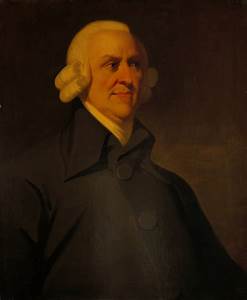 Adam Smith
Adam Smith
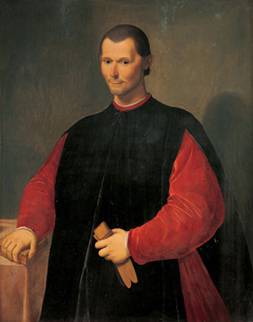 Niccolò Machiavelli
Niccolò Machiavelli
 Sir lsaac Newton
Sir lsaac Newton
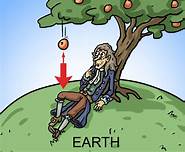 Gravity
Gravity


 THE SALTY SAM NEWS DESK
THE SALTY SAM NEWS DESK

We all know that we are trying to reuse our shopping bags in order to use less plastic nowadays and if your doll does not have a bag to go shopping with, there is one here that you can make for her.
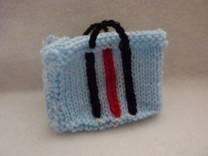
NEWSDESK MINIMAKE
SUPERMARKET SHOPPING BAG FOR A 12” DOLL
BASE (KNIT ONE)
Using 4mm knitting needles and blue dk yarn cast on 21 stitches
Knit 16 rows of stocking stitch
Cast off
SIDES (KNIT TWO)
Using 4mm knitting needles and blue dk yarn cast on 21 stitches
Knit 1 row
Knit 1 row
Knit 16 rows of stocking stitch
Knit 4 rows of garter stitch
Cast off
SIDES (KNIT TWO)
Using 4mm knitting needles and blue dk yarn cast on 13 stitches
Knit 1 row
Knit 1 row
Knit 16 rows of stocking stitch
Knit 4 rows of garter stitch
Cast off
TO MAKE UP
- Using Swiss darning decorate the larger sides with three stripes
- With wrong sides together (to make the form more rigid) sew the bottom of the sides to the base and then sew up the corners of the sides
- Crochet 15 chains into a length of yarn that matches the colour of the two outer stripes (twice to make two handles) and secure into place


*********************
TO ADVERTISE ON THIS BLOG
PLEASE CONTACT:
christina.sinclair.ads@aol.co.uk
*********************

 Quick Quiz
Quick Quiz
Do you know what these terms mean?
- to fluctuate
- an upward trend
- to plummet
- to plateau
- a trigger point
They can be used to describe lines on a graph.
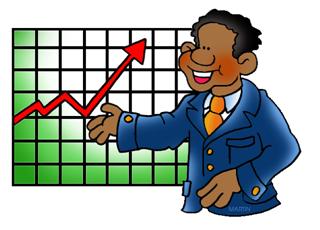



lt’s the Weekend!

HOW TO MAKE A KNlTTED SHEEP
This sheep belongs to the farmers on Blog Post 440.
I think he was shorn this spring but he still has a little top knot of wool on his head.
In Adam Smith’s time the wool industry was very important to our economy.
SIDES (KNIT TWO)
Using 4mm knitting needles and white dk yarn cast on 16 stitches
Knit 6 rows of garter stitch
Cast off 7 stitches and knit to end of row
Knit 13 rows of garter stitch
Cast on 7 stitches knit to the end of the row
Knit 5 rows of garter stitch
Cast off 8 stitches knit to the end of the row
Knit 13 rows of garter stitch
Don’t cast off – leave a length of yarn for sewing up when you cut off your yarn and leave your stitches on this yarn
UNDERSIDES (KNIT TWO)
Using 4mm knitting needles and white dk yarn cast on 12 stitches
Knit 6 rows of garter stitch
Cast off 7 stitches and knit to end of row
Knit 13 rows of garter stitch
Cast on 7 stitches knit to the end of the row
Knit 5 rows of garter stitch
Cast off 8 stitches knit to the end of the row
Cast off
EARS (KNIT TWO)
Using 4mm knitting needles and white dk yarn cast on 5 stitches
Knit 4 rows of garter stitch
Decrease 1 stitch at the beginning of every row until you have 1 stitch left
Cast off
TAIL (MAKE ONE)
Crochet 5 chains into a length of white yarn
TO MAKE UP
- Using over-sew stitching and with right sides together sew back seam and centre seam of the underside pieces
- Put the two together and sew other seams around the legs and turn the sheep the right way out
- Stuff the body very lightly through the chest
- Sew around the head with wrong sides together and turn it right sides out
- Stuff the head and sew up the last part to be sewn up at the throat
- Sew along the chest and stomach using over-sew stitching to pinch the underside together and make the sheep able to stand up
- Sew the ears to the top of the head and add a top knot to the top of the head sewing fluffy yarn a few times into the knitting
- Push one end of yarn into the tail and use the other piece of yarn to sew the tail to the end of the spine
- Sew French knot eyes by winding some black yarn three times around your yarn needle
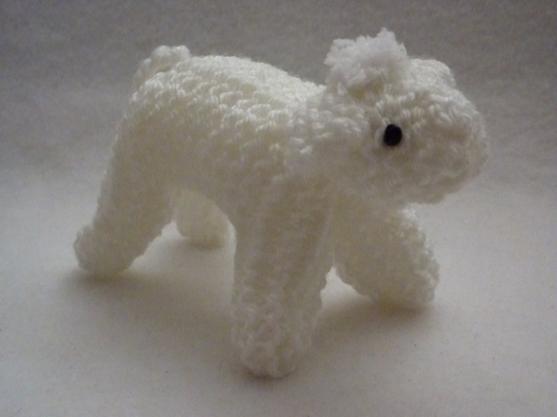
Please note that the material on this blog is for personal use and for use in classrooms only.
It is a copyright infringement and, therefore, illegal under international law to sell items made with these patterns.
Use of the toys and projects is at your own risk.
©Christina Sinclair Designs 2015


Quick Quiz Answers
- to fluctuate – to go up and down
- an upward trend – things may go up and down but overall things are getting better
- to plummet – to go down sharply
- to plateau – when there is no change for a while (shown by a flat line going across horizontally)
- a trigger point – a point where suddenly things get better


Embroidery Stitches
